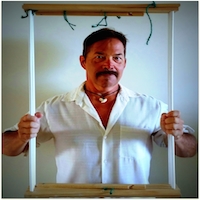Sigmund Freud linked ego and id, forever saddling the Western world with a limiting and rigid psychodynamic duality.
Yet I’ve come to see the truth of a related link, ego and injury. Though not always true, I’ve noticed the bigger the ego the more often the injury, and the reason I’ve noticed is that I have found it in myself.
Ego isn’t a bad word, and an ego is necessary, for it means one has an awareness of the self and their place in the world. Even Patanjali spoke of ego’s place in identity formation, using the word ahamkaar as one of the ego’s three aspects.
A healthy ego borders and protects our self-identity and social energy, and along with the energy of id, ego assists us as we aim at our life’s ambitions. But like beans or tomatoes, there are varieties of ego.
A wise mentor once offered me a crucial distinction by saying it’s important to have a strong ego but not a big one.
This gets at the heart of the matter with injury: a big ego wants to push for recognition, praise and an adoring cadre of witnesses. A big ego might push me to go faster, stronger or deeper than my body is built to withstand.
But a strong ego is one of self-strength with an acceptance of limits. A strong ego knows its place in the world and that having a confident identity does not require followers, trophies or recognition. A strong ego will not drive me to push beyond my limits and therefore will help keep me from injury. A big ego will do the opposite. I could elaborate, but think about your story, your ego, and how it might reveal your injury history.
Like many, I’ve suffered from injuries and I understand their unhappy residuals.
In the past, by will and denial, I powered through injuries and was determined they would not keep me down. This was not good or smart, but when I was young, I fought every impulse to slow down. I detested injuries and didn’t want physical therapy, braces, rest or medical treatment. I had one purpose, and that was to return to activity, competition or physical tests.
Over time, I’ve come to value my injuries for they protect me from increased damage by limiting my range of motion. This prevents over extension, which may have been the cause of my original injury. I’ve come to see the pain of injury as a friend because it tells my body to stop. By listening to this pain, I’ve learned to reframe it as a teacher and healer.
Yes, I value my injuries because they have allowed space and time to bring new insights that would normally have taken longer. As injury takes me out of my comfort zone it can become a quickening container for growth and transformation.
I’ve been slow to learn from my injuries, but their enduring lessons have fallen on good soil: I’ve learned how to accept the patient but enduring movement from painful to playful, from morose to merry, from avoidant to accepting, from ignorance to awareness, from disengagement to engagement in a meditative way.
Greater awareness has helped me discover how to meditate on injury, resulting in new questions that only I could answer. In dialoguing with my injuries, I’ve found these questions help me see them as the teachers they are:
1. How is this injury a positive—can I reframe it
2. What does this injury mean for me in the here and now
3. What does this injury help me to avoid, how is it useful for my mental strength or weakness
4. What am I not required to do when injured—how does it get me off the hook
5. Who am I not required to be when I am injured—how does it allow me to break from my usual ego driven requirements
6. How does this injury help me emotionally—who am I manipulating
7. What does my injury do for me when I wear it on my sleeve
8. Who does my injury allow me to blame, avoid, empower, bless or curse
9. How present was I when the injury occurred
10. What is this injury telling me about the way I live my life
In a gut-check, self-loving honest way, it’s possible to open up the meaning of injuries by using—as one example—a Gestalt chair to chair dialog technique. The methodology is simple but requires active imagination.
Place yourself in one chair and your injury across from you in another. You may name your injury to make it concrete. You may place a pillow, crutch or some other object in that chair so you can better visualize it.
Prepare by finding a quiet time and place, then talk with your injury. Use a notebook and record its answers. Call it by name. Make it speak to you. Through active imagination, you may find surprising answers that can jolt you to a new awareness, deeper understanding and greater self-acceptance.
And this will be good, because yoga practice (and your injury) is largely about new awareness.
Now…back to that ego.
~
References:
Patanjali reference from How to Know God: The Yoga Aphorisms of Patanjali, Swami Prabhavananda & Christopher Isherwood, Vedanta Press, 1953 (pp 15-16).
Love elephant and want to go steady?
Sign up for our (curated) daily and weekly newsletters!
Editor: Catherine Monkman
Photo: Tim Evanson/Flickr












Read 2 comments and reply